Part 2 of 3 Parts (Please read Part 1 first)
The Indian government has been very tight-lipped about the capabilities of the Arighaat. They said that only “technological advancements undertaken indigenously on this submarine make it significantly more advanced than its predecessor,” which was commissioned eight years ago. India has not released pictures of Arighaat since its August 29th commissioning.
Naval analysts say India is clearly on track to develop a subsea nuclear deterrent that packs enough second-strike capability to deter Beijing from taking hostile action against it.
India has newer, bigger subs with longer-range missiles in the works. Those missiles could have ranges up to three thousand seven hundred and twenty-eight miles, according to analysts, enabling strikes anywhere in China.
Matt Korda is an associate director for the Nuclear Information Project at the Federation of American Scientists. He said, “Although India’s sea-based nuclear deterrent remains in relative infancy, the country clearly has an ambition to field a sophisticated naval nuclear force with ballistic missile submarines at its core.”
Korda continued that “These submarines are a critical piece of India’s broader efforts to establish a secure second-strike nuclear force thus allowing India to hold both Pakistani and Chinese targets at risk, particularly with its eventual third and fourth submarines (which will have more missile tubes and longer-range missiles).”
India’s next ballistic missile subs could be years away if history is any predictor of the future. Arighaat was launched almost seven years ago. If that timeline from launch to commissioning applies to the next Indian ballistic missile sub, it won’t join the service until sometime in 2030.
Tom Shugart is an adjunct senior fellow at the Center for a New American Security and a former US Navy submarine commander. He said that a second ballistic missile sub does do something for India’s naval and military psyche.
Shugart said that “It is a marker of being a great power.” He pointed out that the five members of the United Nations Security Council including the United States, Russia, China, the United Kingdom and France all have nuclear-capable ballistic missile submarines, or SSBNs.
The smallest of those SSBN fleets are those of Britain and France. They have four boats each, a number Shugart sees as the minimum for keeping one at sea at all times.
Nuclear-powered submarines are very complex machines. When regular maintenance is needed or when things break and need repairing, the work can take a month or more.
The U.S. Navy’s Ohio-class SSBNs spend on average of seventy-seven days at sea followed by thirty five days in port for maintenance, according to the US Navy’s Pacific Fleet. Refits and overhauls can take up to twenty-seven months for a nuclear reactor refueling, according to US Navy documents.
Shugart continued, “By having more than one, there’s a better chance India will be able to have one of them at sea in a survivable status. But to keep one at sea at all times is probably going to take more than two boats.”
Please read Part 3 next
Blog
-

Nuclear Weapons 875 – India Launches Another Nuclear Capable Nuclear-Powered Submarine – Part 2 of 3 Parts
-
Nuclear News Roundup Oct 15, 2024
Nuclear weapons proliferation is not necessarily bad news scmp.com
TerraPower and Seaborg sign Korean cooperation agreements world-nuclear-news.org
Jamaica signs MoU to advance nuclear adoption world-nuclear-news.org
Nuclear CEO: Why Oak Ridge will be ‘big global player’ in international power race knoxnews.com
-
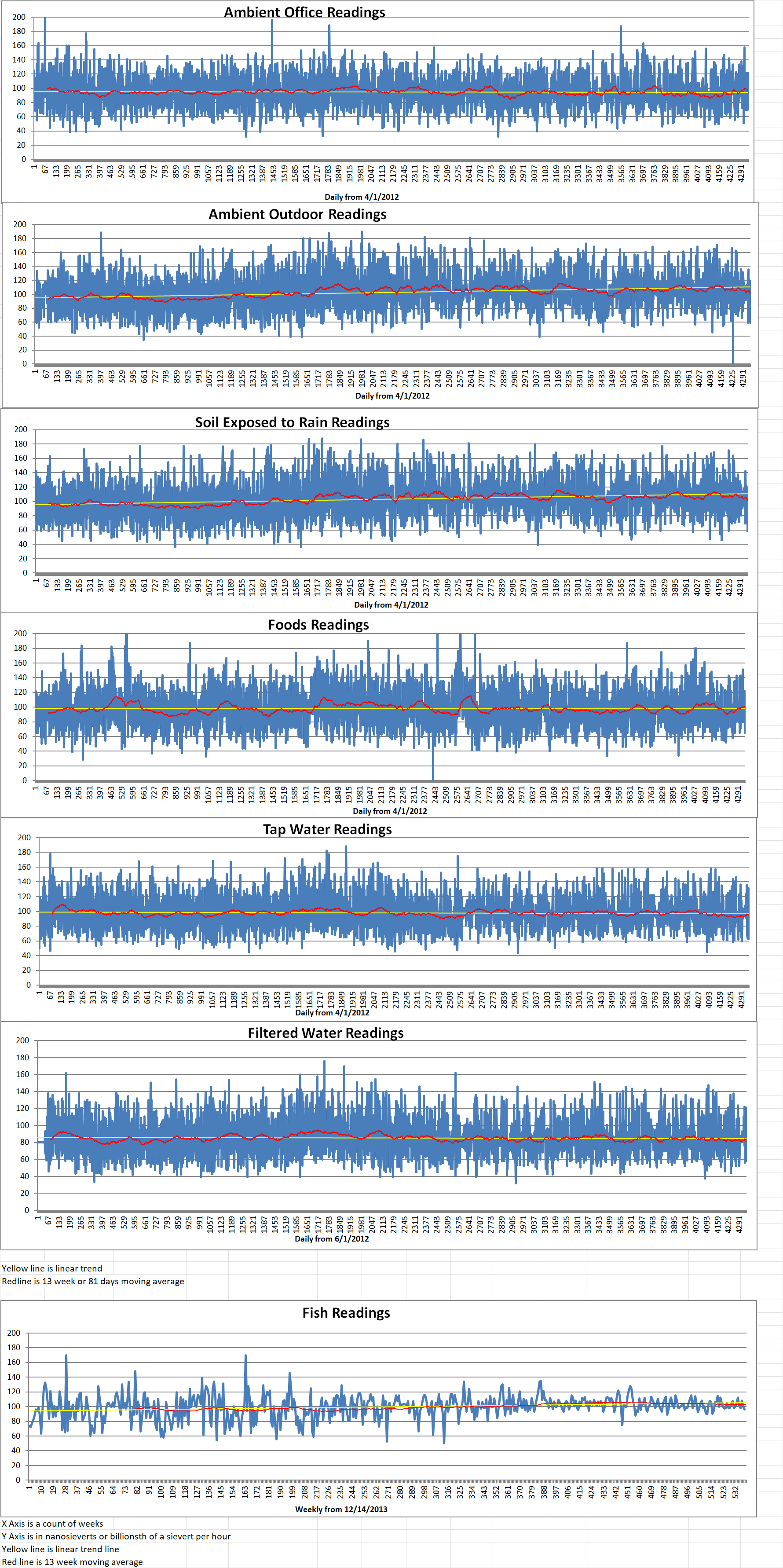
Geiger Readings for Oct 15, 2024
Ambient office = 89 nanosieverts per hour
Ambient outside = 122 nanosieverts per hour
Soil exposed to rain water = 125 nanosieverts per hour
Purple onion from Central Market = 73 nanosieverts per hour
Tap water = 102 nanosieverts per hour
Filter water = 94 nanosieverts per hour
-
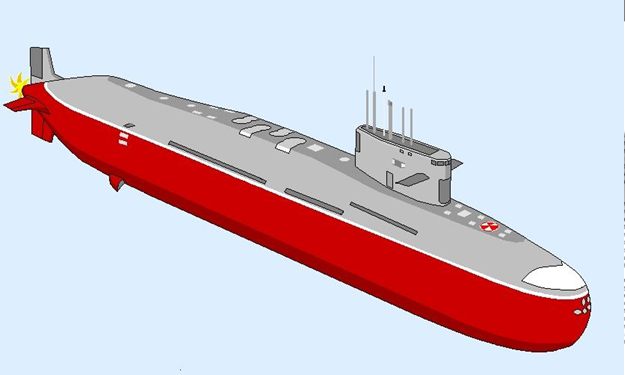
Nuclear Weapons 874 – India Launches Another Nuclear Capable Nuclear-Powered Submarine – Part 1 of 3 Parts
Part 1 of 3 Parts
Although India has not released any official statements about the size of its nuclear arsenal, recent estimates suggest that India has one hundred and seventy-two nuclear weapons and has produced enough weapons-grade plutonium for up to two hundred nuclear weapons. In 1999, India was estimated to have eighteen hundred pounds of separated reactor-grade plutonium, with a total amount of eighteen thousand three hundred pounds of civilian plutonium, enough for approximately one thousand nuclear weapons. India has conducted nuclear weapons tests in a pair of series namely Pokhran I and Pokhran II.
India’s nuclear program can trace its origins to March 1944 and its three-stage efforts in technology were established by Homi Jehangir Bhabha when he founded the nuclear research center, the Tata Institute of Fundamental Research. India first tested a nuclear device in 1974 (code-named “Smiling Buddha”), under Prime Minister Indira Gandhi as a peaceful nuclear explosion.
India’s second nuclear-capable ballistic missile submarine was deployed late last month. The nuclear-powered sub is called INS Arighaat which means “Destroyer of the Enemy” in Sanskrit. This is a move the government says strengthens its nuclear deterrent as India casts a wary eye at both China and Pakistan.
But India is still playing catch-up when compared with China, as the People’s Liberation Army grows its fleet amid simmering tensions along their shared border.
The new sub will “help in establishing strategic balance” in the region according to Indian Defense Minister Rajnath Singh. He mentioned the new sub at an August 29 commissioning ceremony at Visakhapatnam naval base, the headquarters of India’s Eastern Naval Command on the Bay of Bengal coast.
That balance currently tilts in favor of China which has the world’s largest navy by numbers. It includes six operational Jin-class nuclear-powered ballistic submarines that outclass India’s two – Arighaat and its predecessor in the same class, INS Arihant – in firepower.
The Chinese subs can carry a dozen ballistic missiles with ranges of at least 4,970 miles. They have the ability to carry multiple nuclear warheads, according to the Missile Defense Advocacy Alliance, a non-profit organization promoting the development and deployment of missile defense for the United States and its allies.
Arighaat and Arihant are both three hundred and sixty-six feet long with a six-thousand-ton displacement They each carry K-15 Sagarika ballistic missiles that can be launched from four vertical launch tubes. However, the range of the nuclear-tipped K-15 is thought to be only around 466 miles, limiting the targets that can be struck from the Indian Ocean. This information was reported in an analysis by the open-source intelligence agency Janes,
Carl Schuster is a former director of operations at the US Pacific Command’s Joint Intelligence Center. He said, “The INS Arihant-class can barely reach Chinese targets along the eastern Sino-Indian border from the coastal waters of northern Bay of Bengal, which is dangerously shallow for a submarine.”
The de facto border between India and China is known as the Line of Actual Control. It has been a longtime flashpoint between the two. Troops clashed there in 2022 and in 2020, when hand-to-hand fighting between the two sides resulted in the deaths of at least 20 Indian and four Chinese soldiers in Aksai Chin.
Please read Part 2 next -
Nuclear News Roundup Oct 14, 2024
Westinghouse extends FEED contract for new Kozloduy units world-nuclear-news.org
US nuclear regulator kicks off review on Three Mile Island restart Investing.com
NextEra considers nuclear restart in Iowa, while renewable deals swell finance.yahoo.com
Mississippi’s new PSC energized by nuclear power, tepid over renewables mississippitoday.org
-
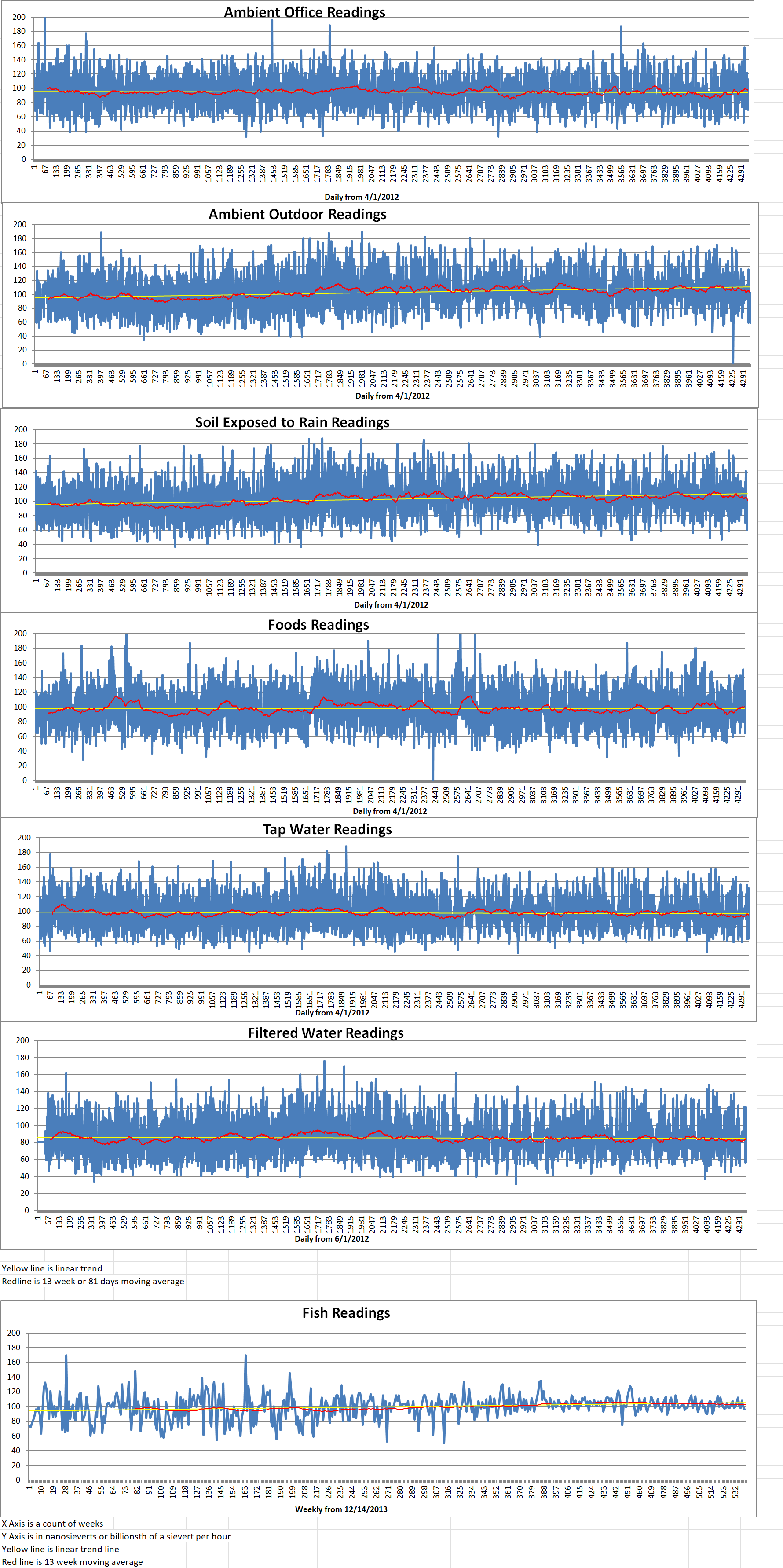
Geiger Readings for Oct 14, 2024
Ambient office = 84 nanosieverts per hour
Ambient outside = 91 nanosieverts per hour
Soil exposed to rain water = 100 nanosieverts per hour
Green onion from Central Market = 73 nanosieverts per hour
Tap water = 115 nanosieverts per hour
Filter water = 109 nanosieverts per hour
-
Nuclear News Roundup Oct 13, 2024
Jamaica signs MoU to advance nuclear adoption world-nuclear-news.org
Orano suspends operations at Arlit world-nuclear-news.org
Decommissioning permit granted for Brokdorf plant world-nuclear-news.org
Mochovce 4 passes safety system tests world-nuclear-news.org
-
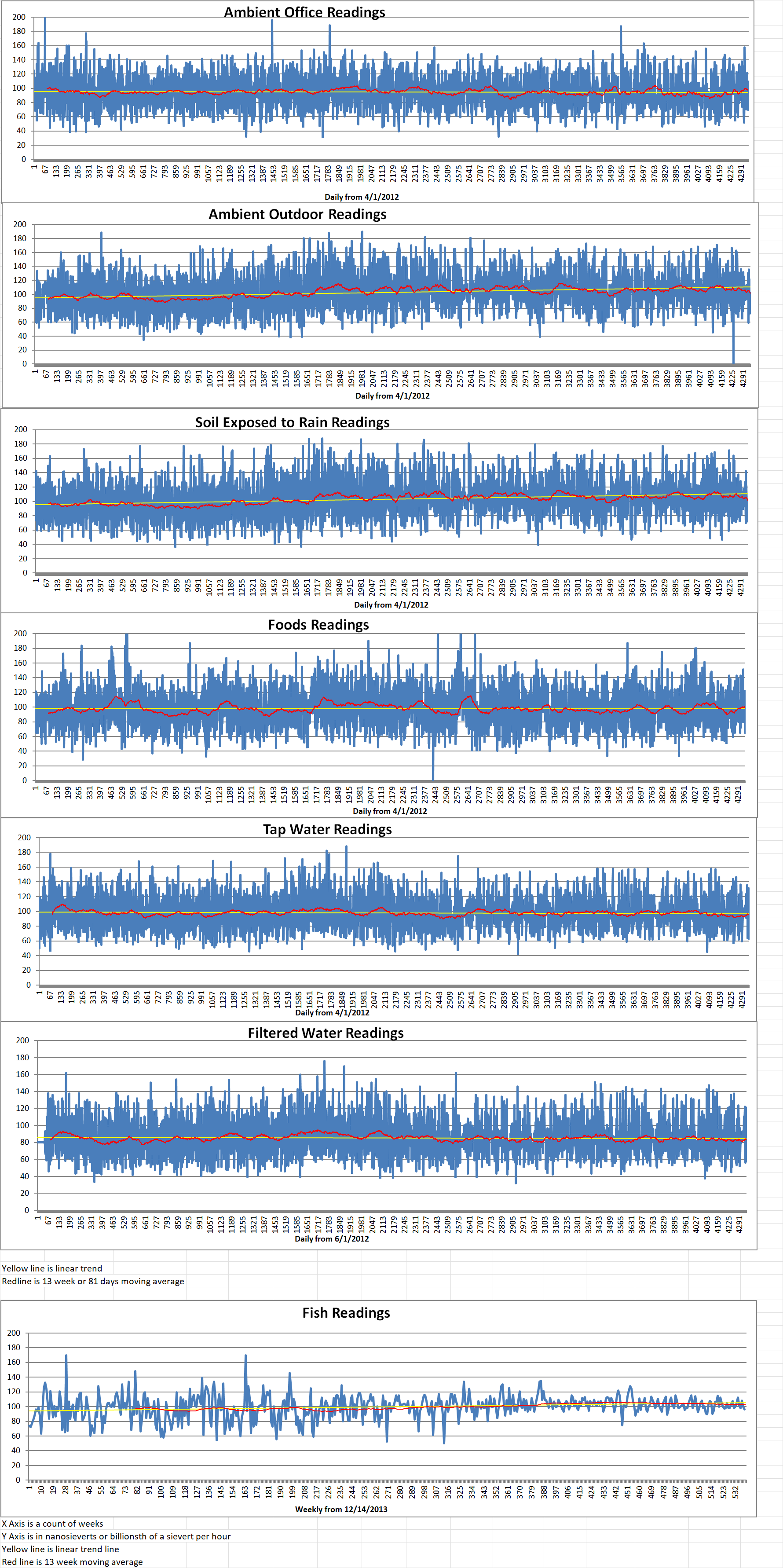
Geiger Readings for Oct 13, 2024
Ambient office = 66 nanosieverts per hour
Ambient outside = 125 nanosieverts per hour
Soil exposed to rain water = 124 nanosieverts per hour
Blueberryfrom Central Market = 78 nanosieverts per hour
Tap water = 93 nanosieverts per hour
Filter water = 83 nanosieverts per hour
-
Nuclear News Roundup Oct 12, 2024
Navy names newest nuclear-powered submarine USS Atlanta ajc.com
US Submarine Earns Highest Military Honor for Spying on America’s Enemies newsweek.com
U.S. companies exposed to the nuclear energy trend seekingalpha.cm
US power grid added battery equivalent of 20 nuclear reactors in past four years theguardian.com
-
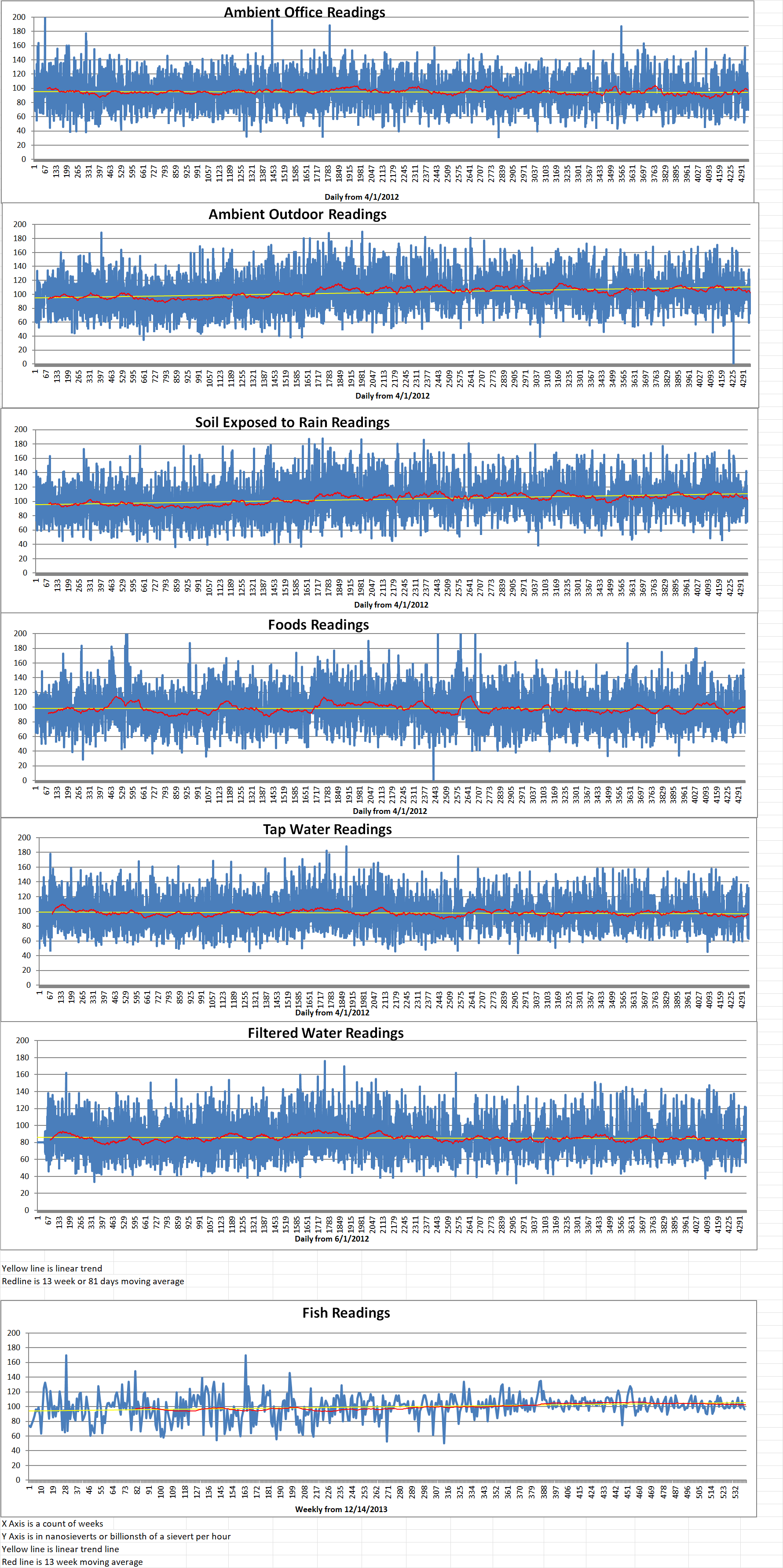
Geiger Readings for Oct 12, 2024
Ambient office = 76 nanosieverts per hour
Ambient outside = 109 nanosieverts per hour
Soil exposed to rain water = 112 nanosieverts per hour
Avocado from Central Market = 87 nanosieverts per hour
Tap water = 110 nanosieverts per hour
Filter water = 100 nanosieverts per hour
Dover Sole from Central = 103 nanosieverts per hour
